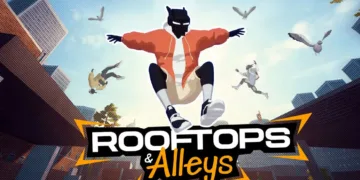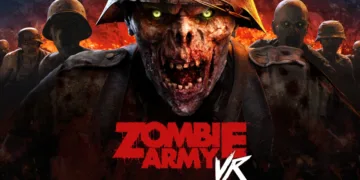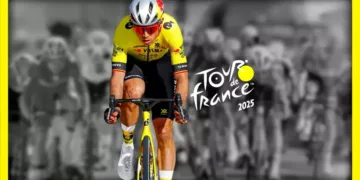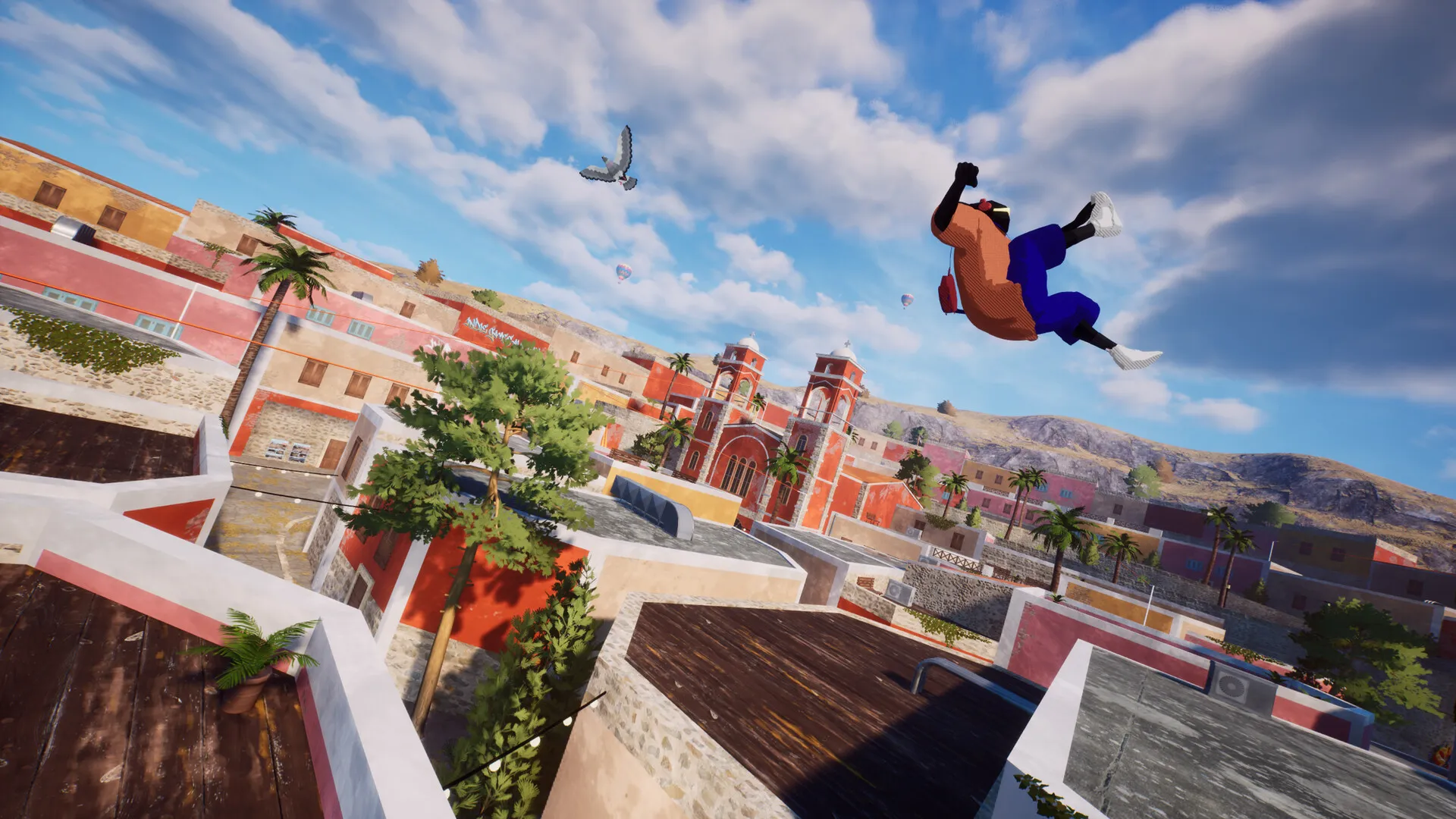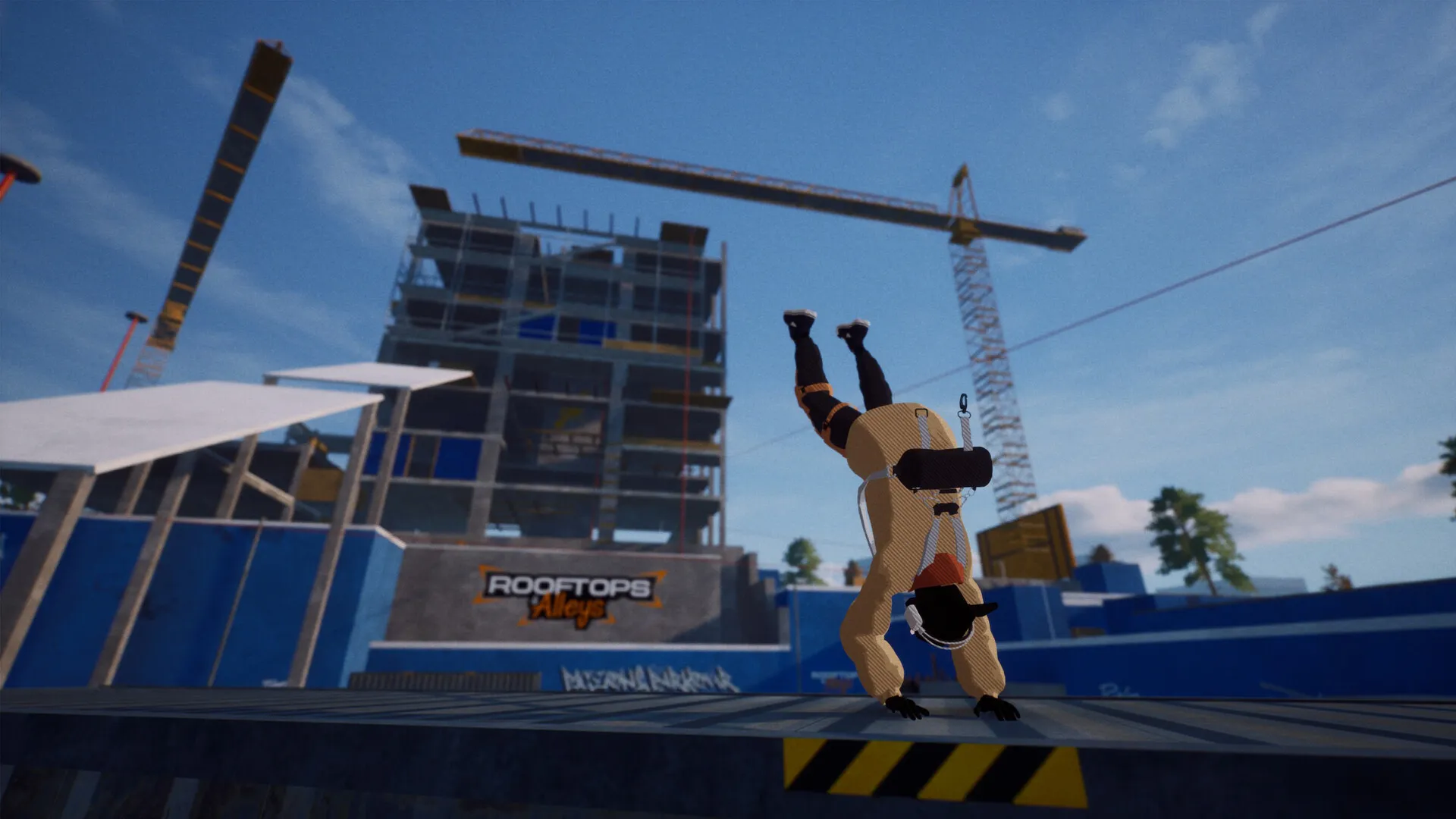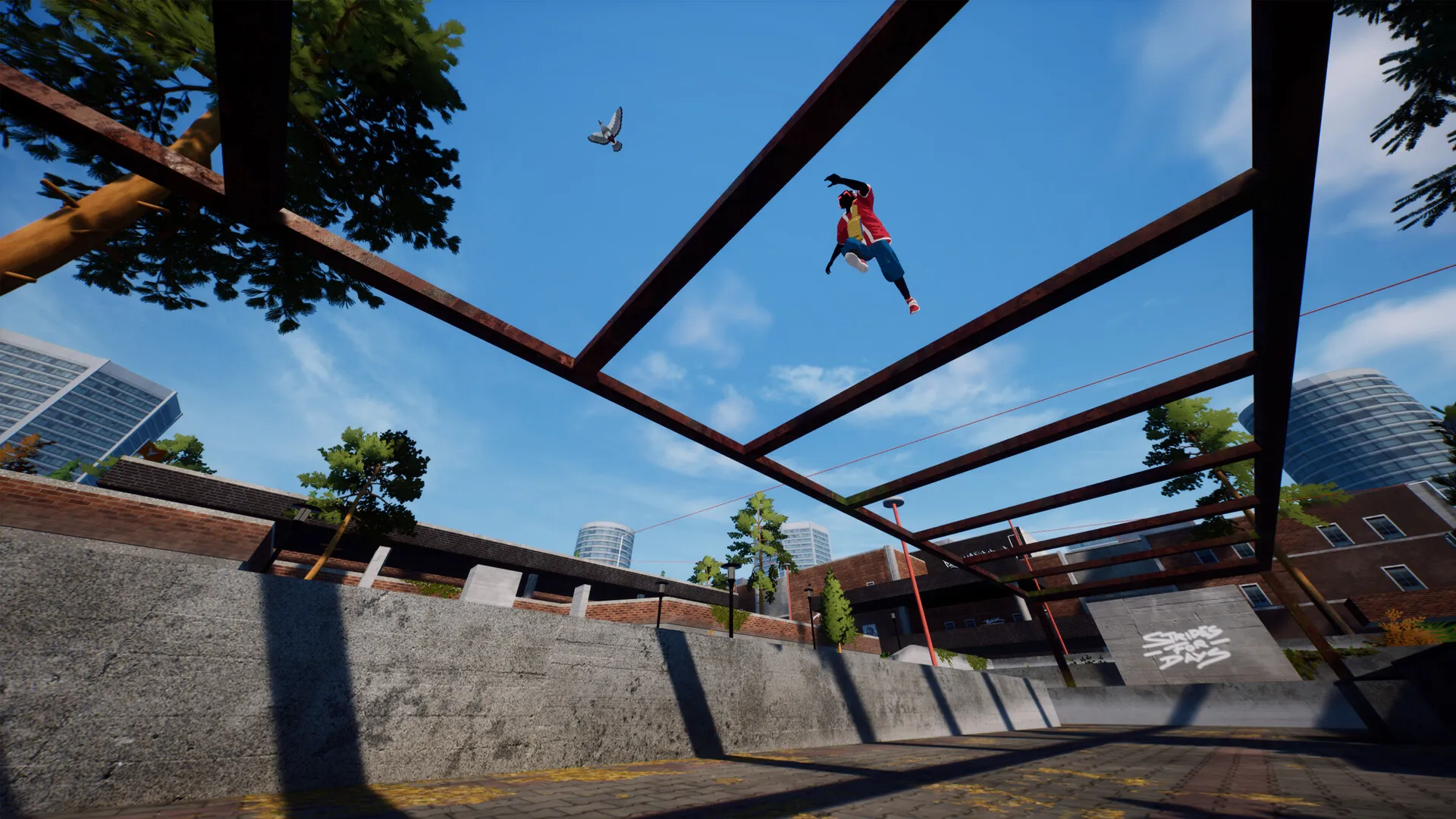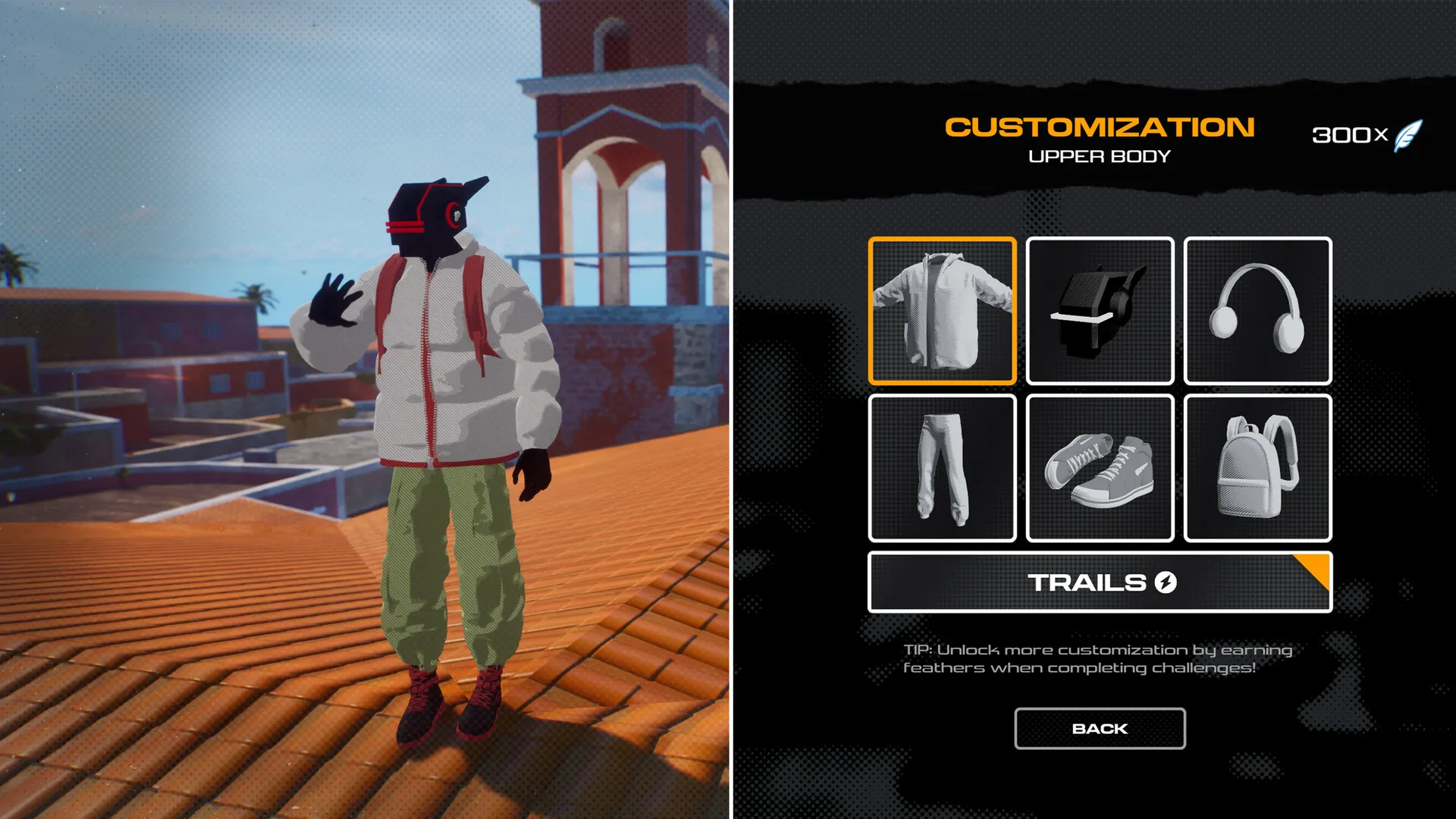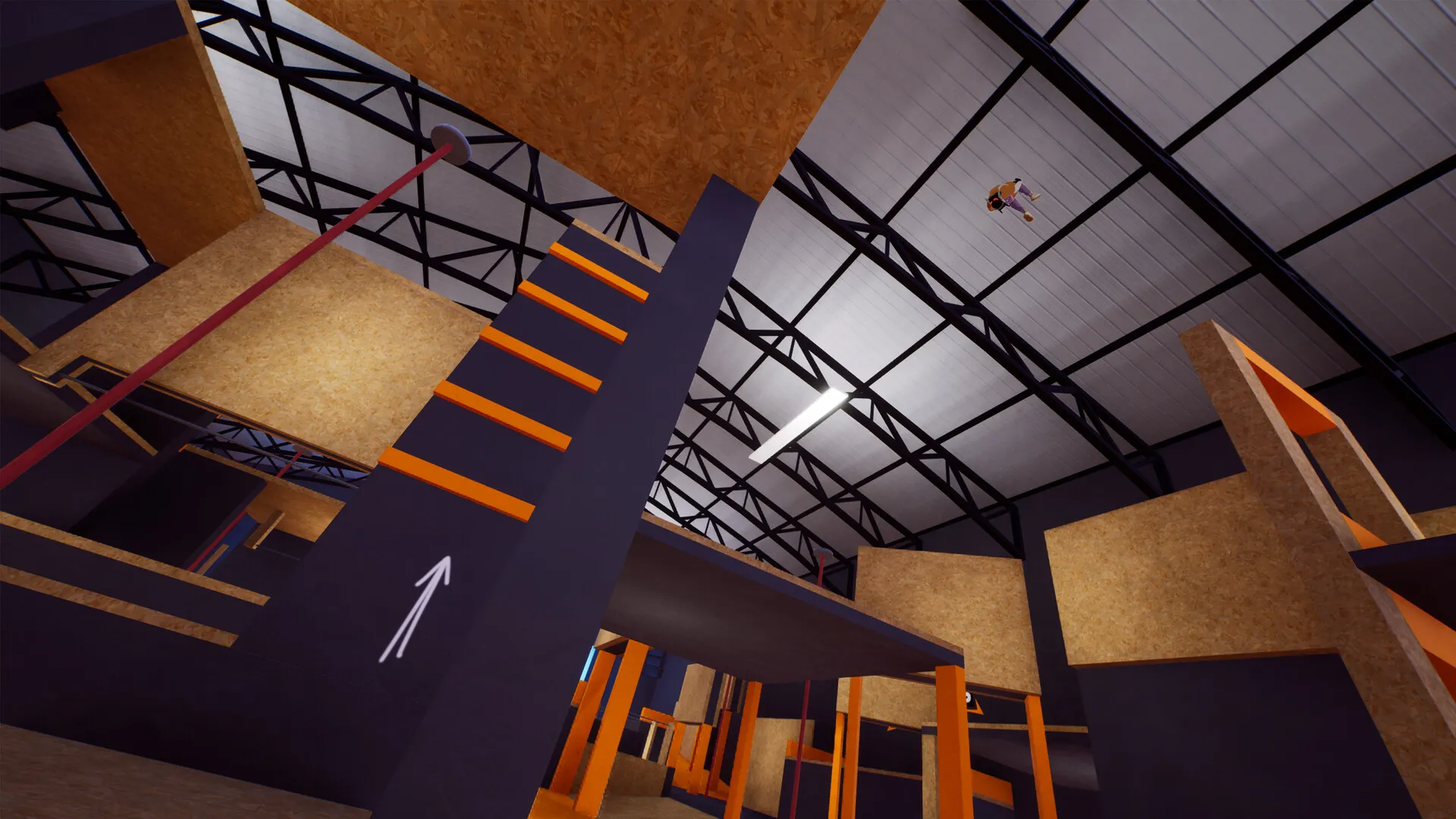Rooftops & Alleys stakes its claim as the first game built entirely around parkour, crafted by a single developer under the MLMEDIA banner. Releasing June 17, 2025, on PS5, Xbox Series X/S, Nintendo Switch, and PC, it places full control of free-running movement in the player’s hands.
At its heart lies a finely tuned engine that marries sprinting, vaulting, wall-running, and precision landings into a seamless flow of motion. Tricks aren’t mere embellishments—they integrate directly into a scoring system that rewards creativity and timing.
From the moment you step into Free Roam, the game’s open-ended maps invite experimentation: scale steel beams in the Steel Yard, weave through tight alleys in the School District, or launch off shipping containers at the Container Ship. Time Trials demand razor-sharp route planning and perfect execution, while Trick Challenges isolate small arenas for high-score pursuits.
Multiplayer then reshapes these playgrounds into arenas of friendly competition, whether you’re racing mates through urban canyons or tagging the highest perch. Rooftops & Alleys delivers exactly what its subtitle promises—a pure parkour simulator that places player skill and exploration front and center.
Engineering the Flow
Rooftops & Alleys delivers a vocabulary of movement that feels both intuitive and richly layered. Sprinting and jumping serve as the foundation, allowing you to close distances or clear gaps in a single bound. Vaulting and climbing add vertical options, so scaling walls or hurdling obstacles becomes second nature once you’ve mastered the timing.
Wall-runs extend your airtime, while rolls and tuck landings absorb impact with satisfying weight. Precision jumps tie it all together—landing on narrow ledges or threading a gap between pipes demands the same careful input that would matter in a tightly written RPG skill check.
Pulling off flips, dives, and vortex tricks hinges on crisp button taps and stick flicks. Combos build naturally when you link a cartwheel into a wall flip, then finish with a roll, earning score multipliers that reward creativity. Yet every trick carries risk: hold a button too long and you’ll bail, breaking your chain. This tension between expression and failure creates moments of tension that echo choice-consequence loops in narrative-driven titles, where a single misstep can redefine your next playthrough.
The tutorial covers basics—grappling sprint versus climb inputs, landing mechanics—but it stops short of teaching advanced flows. As a result, much of your learning unfolds through trial and error. That approach will appeal to players who enjoy uncovering systems in indie RPGs or open-world adventures, yet newcomers may find early sessions taxing. When you finally click with the mechanics, though, those first awkward attempts turn into rewarding “aha” moments that strengthen your engagement.
Responsiveness remains a highlight, though occasional misfires or unexpected rag-doll flops remind you of the game’s precision demands. Wall-run and zip-line transitions sometimes require near-perfect timing, and the camera can pull back too late on quick turns, obscuring your intended landing.
These hiccups undercut a sense of control, similar to when combat lock-on fails in action RPGs, but they’re rare enough that the core flow remains compelling. Adjusting camera sensitivity can mitigate many of these issues, ensuring that your parkour narrative unfolds with clarity—and that every successful run feels earned.
Crafting Your Urban Odyssey
Each map in Rooftops & Alleys offers a distinct backdrop for your personal narrative of movement. Steel Yard’s skeletal scaffolding feels industrial and unforgiving, demanding precise timing to chain vaults across girders. School District’s tidy brick rooftops frame tighter routes, encouraging calculated bursts of momentum. Sunset Paradise bathes palm-lined alleys in warm light, inviting playful detours.
Construction Site’s half-built towers reward vertical experimentation, while The Shed and Container Ship introduce confined spaces that test your spatial awareness. Together, these six environments balance authenticity—echoing real cityscapes—with enough creative license to inspire parkour fantasies.
Sandbox freedom underpins each locale. Open plazas and interconnected rooftops let you chart your own path, whether you’re forging a speed run or teasing out a stylish combo. Pigeon Mode doubles as a narrative device, shifting perspective from ground-level grit to bird’s-eye forethought. Scouting a fallback ledge from above mirrors dialogue choices in narrative-driven indies: your next decision hinges on what you observe, not what the tutorial told you.
Challenge placement weaves structure into the playground. Time Trial gates build a clear sequence—race through bronze corridors toward gold gates—and reward planning as much as execution. Score-attack arenas lock you into tighter confines, spotlighting your mastery of trick flows within a shrinking circle.
The interplay between open exploration and focused trials evokes RPG quest design, where side paths and main objectives coexist without impeding one another. You can break from a designated route to forge a secret shortcut or remain on-track for medal progression.
Visual clarity remains paramount. Simple geometry and muted palettes prevent confusing visual noise, allowing you to zero in on the next handhold or grind rail. Dynamic weather shifts—from midday sun to moody dusk—enhance immersion without obscuring sightlines.
A sudden rain shower might slick a ledge, heightening tension as you commit to a leap. These atmospheric touches reinforce the emotional resonance of your runs, turning each map into a stage for both technical prowess and self-directed storytelling.
Dressing the Runner
Progress in Rooftops & Alleys hinges on a classic bronze-silver-gold system: clear performance thresholds award feathers, which function as the sole in-game currency. Each completed Time Trial or Trick Challenge drops a handful of feathers, and chasing that next tier—especially the gold medals—often demands fine-tuned mastery of parkour combos.
This structure mirrors reward loops in indie RPGs where combat feats net XP, yet here the stakes remain purely aesthetic: feathers unlock customization rather than new abilities.
Cosmetic options span over a hundred items, from streetwear hoodies to sleek urban gear, all fully recolorable via an intuitive palette editor. Crafting a visual identity becomes an act of self-expression, turning your avatar into a narrative avatar whose style reflects your playstyle. Just as choice in a narrative RPG can signal a moral alignment or backstory, these gear selections convey personal flair—whether you favor bold contrasts or a muted, streamlined look.
Mechanics-driven progression offers clarity: you know exactly what performance yields which rewards, and that transparency appeals to players who relish optimizing runs. It keeps focus squarely on refining movement, much like minimalist indie titles that strip systems back to their core loop.
Yet without narrative quests or environmental collectibles, some runs risk feeling aimless once key outfits are unlocked. A few additional objectives—hidden feathers tucked beneath a rooftop pipe or narrative vignettes unlocked by cosmetic milestones—could layer more meaning onto each feather chase.
Customization here isn’t merely dressing up a character; it’s an ongoing conversation between player skill and visual storytelling. As you hone your fluid tricks, the gear you unveil becomes a chronicle of accomplishment, each hat or jacket marking a moment when mechanics and self-expression intersect.
Sights and Sounds in Motion
The animation in Rooftops & Alleys captures the raw physics of parkour with remarkable fidelity. Every vault carries a sense of momentum, and the transition from a wall-run into a tuck roll lands with a satisfying weight.
Trick animations—whether a backflip dive or a spinning vault—flow seamlessly, giving each movement an expressive flair. Characters inhabit a minimalist art style: clean lines and muted palettes ensure that obstacles and ledges stand out against the skyline. This simplicity doesn’t feel empty; rather, it directs attention to your inputs, much like a well-designed RPG battle arena keeps focus on the action rather than on background clutter.
Audio design fuels that sense of motion. The soundtrack weaves trance, electronica, and R&B elements into a pulse that matches your pace. When you link a series of moves, the beat lifts, encouraging you to push further. Breaking into a new combo often feels like leveling up in an indie RPG—each successful jump or flip lands on a peak in the track, rewarding your timing as much as the on-screen score.
Sound effects ground the experience in physicality. The crisp snap of a perfect landing contrast sharply with the hollow clang of a failed maneuver. Rag-doll bails trigger a distinct thud that reminds you of stakes in systems-driven games, where a single mistake can reset a quest’s progress. These audio cues transform each session into a rhythmic interplay between risk and reward, inviting both casual players and hardcore enthusiasts to lose themselves in the beat of the city.
Collective Movement and Emergent Play
Multiplayer in Rooftops & Alleys transforms solo exploration into a shared narrative of motion. Four-player Freeplay sessions let you assemble at any rooftop nexus, trading silent cues or emotes to plan routes.
It’s akin to assembling a party in an indie RPG before setting out on a quest—each runner brings a unique style, whether prioritizing speed vaults or flourish-driven combos. TAG and Capture the Flag inject objectives into the sandbox, turning open plazas into dynamic battlegrounds where every wall-run or roll carries tactical weight.
Joining a session is seamless: you can hop into open games or send direct invites with minimal friction. That ease of access echoes the matchmaking simplicity found in cooperative narrative indies, where the story momentum depends on keeping everyone engaged.
Yet the absence of voice or text chat channels creative expression into emotes and gesture sequences. A wave becomes a signal to begin a sprint relay; a thumbs-up after a flawless flip echoes how choice-driven dialogue in RPGs can bond characters without spoken word.
Shared wipeouts become hallmarks of group identity. When one runner misjudges a leap and rag-dolls off a ledge, laughter and reproach ripple through the session—a social consequence that resonates deeper than mere score penalties.
Pigeon Mode races heighten this camaraderie: skimming above the urban sprawl, you compete to map aerial shortcuts, shifting perspective as though toggling between narrative viewpoints in a branching indie title. These collective moments craft an emergent storyline defined by triumphs and tumbles alike.
Longevity blooms from these social hooks. While solo runs hinge on medal progression, multiplayer steers you back through familiar maps to rekindle that shared rush. Yet there’s room to expand: introducing limited-time challenge events or community-driven leaderboards would echo live-service RPGs, fueling recurring engagement.
Text chat or quick-phrase prompts could deepen coordination, much like branching dialogue options enrich character bonds in story-focused games. For now, the multiplayer suite stands as a testament to the game’s core principle: movement is more meaningful when experienced together.
Tools That Shape Your Flow
The pin dropper system acts like a narrative checkpoint in an open-world RPG, letting you mark bespoke respawn points across any map. Rather than replay entire routes after a misstep, you return instantly to critical junctures—mirroring how branching dialogue saves anchor choice consequences mid-conversation. This tool streamlines Time Trial retries, encouraging experimentation with alternate paths without penalizing curiosity.
Slow-motion toggles serve dual purposes: they double as a planning aid and as a cinematic device. When you pause the city’s rhythm, you can map out intricate trick sequences—plotting your own “story beats” across rooftops. Photo Mode complements this by transforming gameplay into a visual narrative canvas.
You capture dynamic freeze-frames of mid-air vaults or wall-run exits, curating personal highlight reels much like players in narrative indies frame pivotal cutscenes. These features invite players to interpret each run as a bespoke tale of movement.
Under the hood, Rooftops & Alleys maintains solid performance. Whether you’re on Switch or a high-end PC, frame rates stay largely stable, preserving the tactile feel of each input. Occasionally, collision quirks surface—a character clipping through a thin wall or misaligning with a zip-line—but such hiccups are rare enough that they feel like narrative disruptions rather than gamebreakers.
When they do occur, rebounding via a pinned respawn or engaging slow-motion to reattempt a tricky link usually suffices. These quality-of-life systems reinforce the game’s core promise: unfettered parkour becomes both accessible and deeply personal.
The Review
Rooftops & Alleys: The Parkour Game
Rooftops & Alleys nails the physics and freedom of parkour, rewarding skill with satisfying flow and style. Its deep movement systems and slick animations shine, though a steep learning curve and limited maps temper long-term engagement.
PROS
- Exceptionally precise, expressive movement
- Fluid animations and clear visuals
- Creative tools (Pin Dropper, Slow-Mo, Photo Mode)
- Engaging multiplayer wipeouts and races
CONS
- Steep trial-and-error learning curve
- Only six maps with sparse objectives
- Occasional input misfires and clipping
